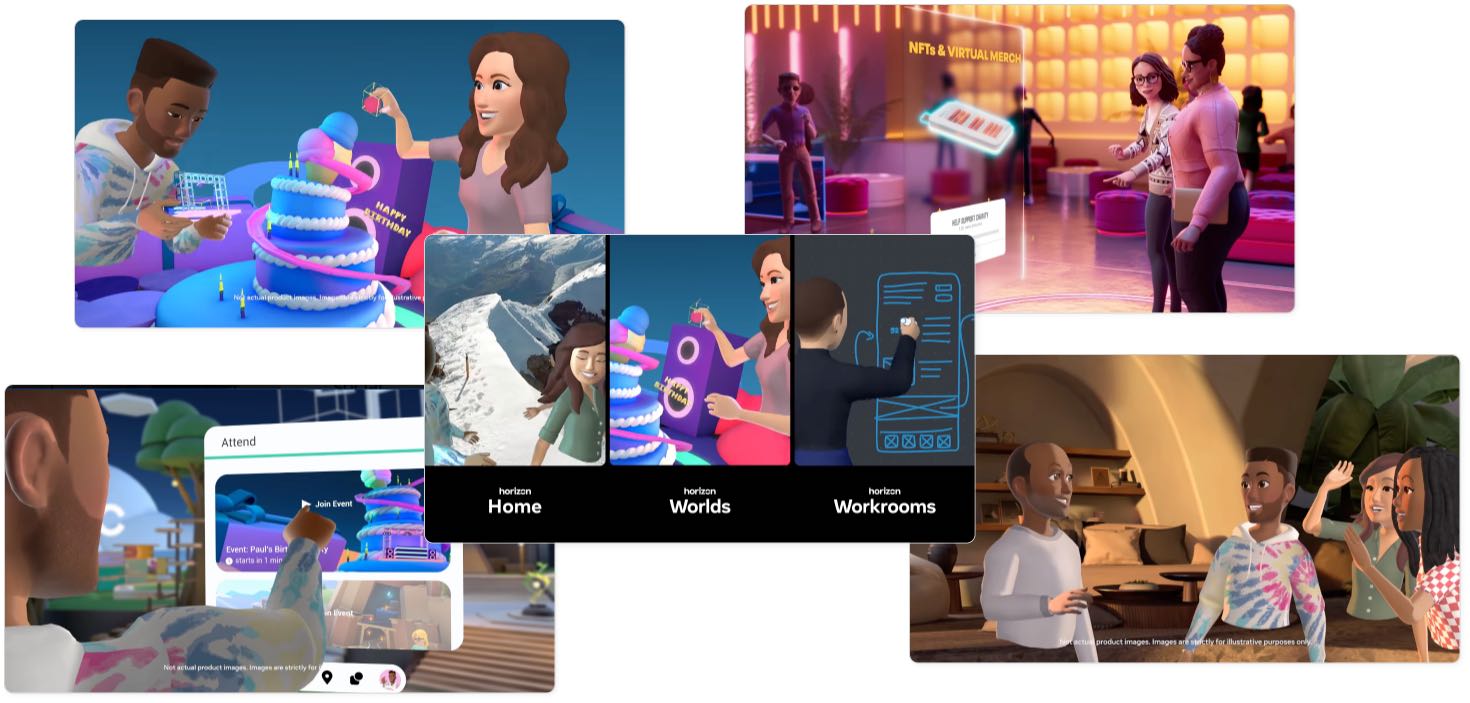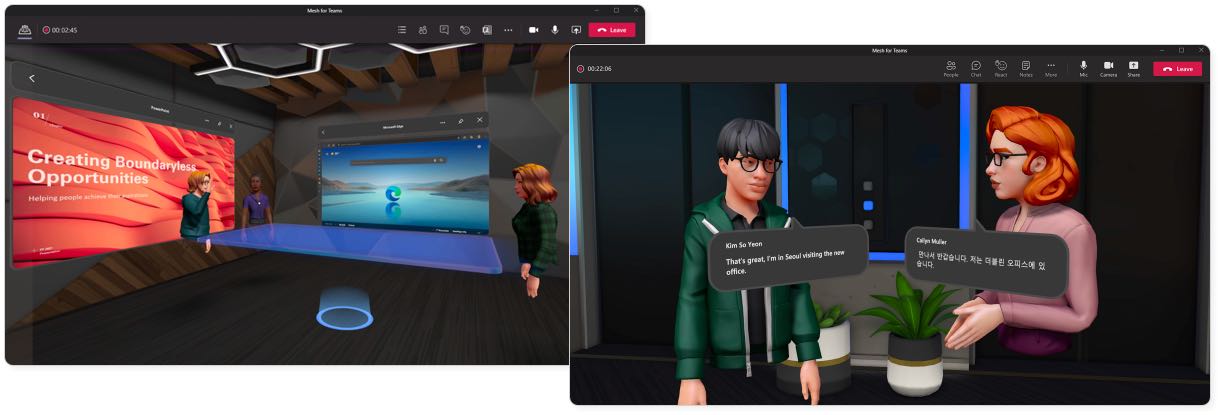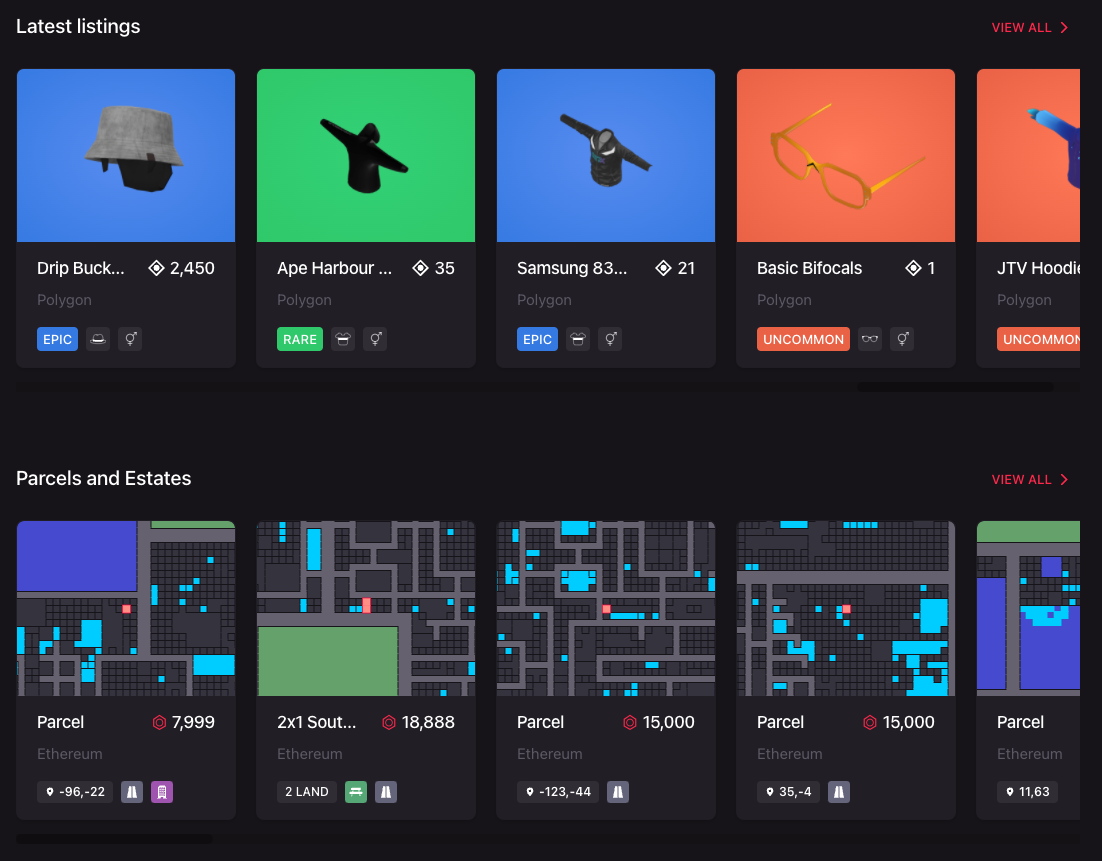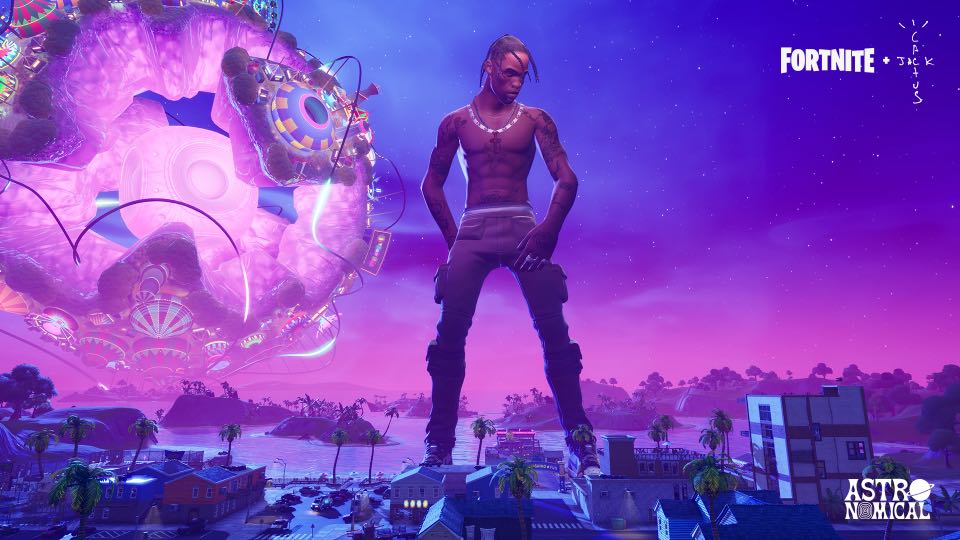I take it you’ve heard about this “metaverse” thing recently. Perhaps you saw Facebook’s rebranding to Meta and the speech about being a “metaverse company” that came along with it. And Meta is certainly not the only company with this mission.
By now, it’s probably safe to assume that the metaverse will play a large role in our future. It’s gonna impact our lives as consumers, as employees, as designers and developers, as investors, and simply as human beings in various ways.
But what exactly is the metaverse?
It’s unfortunate and exciting at the same time that “the metaverse” isn’t easily explained in a short paragraph. It’s similar to having to explain the Internet. Actually, it might be like explaining the Internet back in the 1980s when we had just seen its first iterations and some of the necessary building blocks. It was enough for people to imagine the future but not enough for anyone to truly know.
Thus, the term ‘metaverse’ is ambiguous, broad, and still being defined and used differently by different people.
However, from all the time I spend in the world of innovation, technology, product design, crypto, and NFTs, I’ve gotten a pretty good grasp of the consensus understanding of the term.
So, have you read Snow Crash?
Neal Stephenson is widely credited for inventing the term ‘metaverse’. It was first used in his 1992 novel Snow Crash, a story in which people enter a 3D virtual reality space by putting on what seems a lot like the VR headsets we know today. Think Oculus Quest or HoloLens.
In Snow Crash, the metaverse appears to its users as an urban environment where everything takes place along one large road, aka The Street. People go to the metaverse to hang out, socialize, basically live their lives. And they’re so immersed in this virtual world that they forget their real-world surroundings. To some, it’s full-on escapism from their sad, boring, mediocre lives.
Snow Crash is a great read whether you view it as research or entertainment. If you prefer a good movie over a 500-page book, Ready Player One, Minority Report, Avatar, and the Iron Man movies are common mentions in relation to the metaverse.
What are the experts saying?
With that high-level introduction to Neal Stephenson’s depiction of the metaverse, let’s see what other important actors in the space have to say. Does the Snow Crash version of the metaverse align with what the big tech CEOs, developers, and thought leaders have in mind?
I will only highlight a few of the most relevant and interesting depictions of the metaverse here. When combined, they also serve as a good representation of the industry’s perspective overall.
Mark Zuckerberg and Meta
Mark Zuckerberg has been serious about the metaverse for a while. He said recently that Facebook will be known as a “metaverse company” in 5 years, rather than a “social media company”. And in case anyone still doubted his ambitions, he just rebranded Facebook to Meta. Talk about making a statement!
He’s given plenty of insights into his vision for the future of human connections, how we interact with each other, and how we live our lives more broadly. He naturally sees his company and its products as key ingredients in this future.

Meta’s contribution to the metaverse consists of Horizon Home, Worlds, and Workrooms (source: Meta)
In July 2021, Mark Zuckerberg gave a talk on the topic to his employees. Afterward, he went on Vergecast to further discuss his plans. In this interview, he said the following:
“The metaverse is a vision that spans many companies — the whole industry. You can think about it as the successor to the mobile internet. And it’s certainly not something that any one company is going to build, but I think a big part of our next chapter is going to hopefully be contributing to building that, in partnership with a lot of other companies and creators and developers.”
Zuckerberg also made it clear that the metaverse isn’t synonymous with virtual reality. While he does think VR will be an important part of the future metaverse, it’s also going to be accessible through regular PCs, mobile devices, and game consoles.
Satya Nadella and Microsoft
Microsoft is one of the companies that want to bring work into the metaverse. They’re doing so through their Mesh product and, more specifically, Mesh for Microsoft Teams. The latter “aims to make collaboration in the ‘metaverse’ personal and fun”.
In November 2021, Satya Nadella, CEO of Microsoft, tweeted the following along with a 3-minute video that I recommend you go watch:
“The metaverse is here, and it’s not only transforming how we see the world but how we participate in it — from the factory floor to the meeting room.”
Satya Nadella has also talked about the gradual evolution from video-based meetings to 2D avatars to immersive 3D meetings. He sees this as a practical way for us to think about how the metaverse really emerges.

Mesh for Microsoft Teams is one of the leading platforms for work in the metaverse (source: Microsoft)
Matthew Ball, Venture Capitalist & writer
Matthew Ball is a prominent VC and writer who’s written some excellent essays on what the metaverse could be. Among other things, he’s written the following:
“The metaverse is a massively scaled and interoperable network of real-time rendered 3D virtual worlds which can be experienced synchronously and persistently by an effectively unlimited number of users with an individual sense of presence, and with continuity of data, such as identity, history, entitlements, objects, communications, and payments.”
Notice that Matthew talks about a network of virtual worlds. This aligns well with Mark Zuckerberg’s idea that the metaverse won’t be owned or built by one entity.
Putting it all together
The people who are currently building and defining the metaverse all describe it in slightly different ways depending on their context and frame of reference. I’ve only highlighted a few of them in this article but there are obviously far more people playing essential roles in this development.
If we analyze how Mark Zuckerberg, Matthew Ball, Satya Nadella, and many others view and define the metaverse, certain patterns emerge. Putting it all together, the following characteristics seem to be what defines the metaverse.
The metaverse is a network of virtual worlds
Most people believe that the metaverse will and should be a huge network of individual virtual worlds. Think of the metaverse as the Web today and each virtual world as one of the apps or websites you use in your daily life. In fact, just think of the metaverse as the next step in the evolution of the Web and imagine Facebook, Netflix, Amazon, and Discord all making virtual 3D versions of their apps. This gives us a pretty good idea of what the metaverse will be like.
This means that our metaverse experience will be defined by the individual worlds we spend our time in, just as our Web experience today is defined by the apps we use. These apps are what give the Web value and meaning. We will say the same about the virtual worlds built in the metaverse.
Skeptics worry that the metaverse will be owned and controlled by one company. Most of these skeptics see Mark Zuckerberg and Meta as the biggest threat. However, even Mark Zuckerberg himself says that the metaverse will be a collaborative effort among multiple companies, developers, and creators. A vast network of shared virtual spaces.
In this sense, Meta will be no more “the metaverse” than Google is “the Internet”. Meta will build one virtual space, albeit a massive one, alongside many others.
The metaverse is social and immersive
Perhaps the most defining characteristic of our future metaverse experience is that it will be immersive. This will set it apart from our current interaction with screen-based devices. Neal Stephenson told Vanity Fair in 2017 that the metaverse will be immersive, a completely different world than your real one, and much closer to virtual reality than augmented reality. Most people seem to agree.
Being in the metaverse will make our real-world surroundings irrelevant. We won’t see our regular living room when we’re in the metaverse, nor will it matter for our metaverse experience. Each one of us will feel like we’re actually there. We will be participants in our various metaverse experiences rather than just observers of them. These will often, if not always, take place in what looks like actual physical “spaces”, giving us a sense of presence, spatial awareness, and a literal point-of-view.
Something that will help make the metaverse immersive is that our experiences will happen in real-time, often involving other people who are there in the metaverse with us. Think live shows, video streams, or phone calls – just in 3D and so immersive that you forget about your real-world surroundings.
The metaverse won’t be all about social interactions. But social interactions are possible because of the openness and real-time nature of the metaverse. It’s similar to when you go grocery shopping, go to the library, or work in an office. You’re not necessarily talking with people all the time, but you’re likely not alone. And social interactions are possible.
The metaverse will be for all areas of our lives
We will be able to do essentially everything in the metaverse. It will be for leisure, games, and socializing. It will be for work, education, and shopping. It will be for coaching, yoga sessions, and doctor consultations. Again, this makes perfect sense when we see the metaverse as a natural evolution of the Internet today.
We will wake up and go to work or school in the metaverse. When we get off, we’ll hang out with friends, play games, attend parties, events, and meetups, and go to conferences and exhibitions. We will also do our shopping in virtual stores, malls, and supermarkets.
The metaverse will be for essentially everything we currently do online. And it will be for the things we don’t yet do online because they require that immersive, 3D, virtual reality setup. That’s exactly what the metaverse enables.
We will have an identity in the metaverse
We won’t just pop into the metaverse as someone new and/or anonymous every time. We will have an identity in there, just like we do in the real world. This will include our names, how we look, what we wear, what we own, our past activities, accomplishments, relationships, and so on.
We will likely be able to have the same identity across virtual worlds. This is different from today’s Web where we register our usernames and create profiles separately on all social media networks.
It’s also important to note that anonymity may very well be an option. At least in some areas of the metaverse. And you will likely be able to switch between any of the digital avatars you own. People already do this when they match their NFT avatar to each of the Discord servers they’re in. We’re starting to see this in 3D virtual worlds like Decentraland as well.
We will truly own our digital items in the metaverse
As we begin living parts of our lives in the digital world, even more so than we’re already doing it today, it seems natural that we can own digital things as well. Our possessions will likely include virtual land, homes, furniture, home decor, and pets. We will buy clothes and accessories for different occasions and to express our style and identity as we do in the real world.

Some of the virtual clothes, accessories, and land for sale on Decentraland’s marketplace
Some of us may be business owners with our own storefronts, workshops, studios, and other venues. Many will own game items, skins, and characters, just as gamers already do in Fortnite, Roblox, and other games.
Unlike the current games though, we will truly own our belongings. They won’t just be in-game items that essentially belong to the game company. Put another way, we won’t buy a shirt that can only be used inside Meta’s virtual world and another for Microsoft’s.
Our identity and our possessions will be usable across worlds, just as our real-world clothes, accessories, gadgets, and pets can come with us across borders and to the grocery store, the theatre, and a party. Okay, maybe we can’t take our pets everywhere, but you get my point.
To many people in the space, this interoperability is one of the key characteristics of the ideal metaverse. It’s still very unclear how exactly it will be made possible and if corporations will get onboard. Many people see blockchain technology, cryptocurrencies, and NFTs as playing important roles here. More on this a little later.
There will be a whole new metaverse economy
Regardless of how immersive the metaverse is, we will still need to pay rent, buy food, and live our lives in the real world. But think about all the money you spend on entertainment and services that could easily move into the metaverse.
And think about all the money you spend on clothes, accessories, and other items that will feel completely natural and necessary to buy in the metaverse as well.
All these digital goods, services, and experiences enable a whole new digital economy in the metaverse. We will work and live, earn and spend, in the metaverse. We will buy from companies and creators, and trade among each other on secondary marketplaces.
Many people see cryptocurrencies as the obvious medium of exchange in the metaverse. They’re digital-native and can be completely decentralized without government control. It remains to be seen if one cryptocurrency will win out and become the metaverse standard. At the same time, governments and corporations are working on their own cryptocurrencies. Many people are following this development closely and it’s definitely going to be interesting to see how the metaverse economy takes shape over the coming years.
The state of the metaverse
Most people talk about the metaverse as the future. But you know what they say about the future, right?
The future is already here, it’s just not evenly distributed.
Massively Multiplayer Online Games (MMOGs) like Roblox, Fortnite, and World of Warcraft are already operating like their own virtual worlds. Players can have their own identities, meet and interact with other people, and trade virtual items as part of an immersive experience.
Marshmello held a virtual concert in Fortnite as early as 2019. Travis Scott had his own surreal Fortnite event in 2020. Both artists attracted millions of attendants. Second Life created what could easily fit into the futuristic depiction of the metaverse all the way back in 2003.

Media outlets called Travis Scott’s Fortnite event “surreal” and “spectacular” (image source: Fortnite on Twitter)
Decentraland and The Sandbox are creating blockchain-based virtual worlds for casual hangouts, events, exhibitions, and games. The latter is just about ready for public launch.
Meta’s Horizon Workrooms lets you connect and collaborate with your team, even if you’re across the world. It’s currently in beta mode and not yet open to the broader public, but it’s not far off. You do need a pair of Oculus Quest 2 to use it though. And this brings me to the next point.
The state of VR
Mark Zuckerberg has made it very clear that he does not see the metaverse as synonymous with VR. He’s even said that the metaverse will be accessible via regular devices like smartphones and laptops.
However, many people in the space describe the metaverse as an immersive experience, one that transports you away from your real-world environment. Some call it a hypothetical iteration of the Internet as a single, universal virtual world that is facilitated by the use of VR and AR headsets.
And, to be fair, Mark Zuckerberg himself said that VR and AR will play a very important role in the future metaverse. With this in mind, I think it’s safe to say that better hardware, especially in the form of VR headsets, will be an important step toward mainstream adoption of the metaverse.
Zuckerberg’s Oculus, which has been owned by Meta since 2014, is leading the charge in the VR headset space. Microsoft’s HoloLens is more targeted toward professionals. However, they’re both big, clunky, and expensive. Oh, and they’re still making a lot of users dizzy and nauseous.

One idea of what a future Apple VR headset could potentially look like (source: AppleInsider)
All these shortcomings could quickly be a thing of the past though. Meta is expected to release a new version of the Oculus in 2023. Apple is rumored to be developing its own VR headset as well. These could be what usher in the mainstream moment for VR and the product evolution we need for all the ambitious ideas about the metaverse to become reality.
The role of NFTs in the metaverse
Let me wrap up this piece with a topic I’ve been known to talk a lot about lately: NFTs.
I’ve written multiple articles about why NFTs aren’t just expensive art, weird animal avatars, and essentially overprices jpegs. Rather, the NFT technology is simply an enabler of digital ownership. And remember how that was one of the key traits of the metaverse?
NFTs enable us to own our stuff in the metaverse. This could be a plot of land, the house we build on it, our clothes, our pets, or even our names. And sure, also our cartoon avatars.
And while games and virtual worlds like Fortnite, WoW, and Roblox to a large extent fit the description of the metaverse, NFTs may be the differentiating factor. Because while you can buy and trade skins, weapons, and other items in these games, you don’t really own them. They exist within a given game’s closed borders and you cannot take them with you when you leave. The goal of the metaverse is to break down these borders. And NFTs could be what enables this.
Closing thoughts
The metaverse promises to make our digital experiences just as immersive, engaging, and real as the ones we have away from our screens. Thus, I think we can look at the metaverse as the ultimate replication of real life in the digital world and as the natural next step in the evolution of the Web.
In some ways, the metaverse is already here. At least to some extent. And from this point of view, it would make sense to expect a gradual transition where our lives move further and further into the metaverse.
At the same time, technological advancements like new VR headsets coming from Meta and Apple could easily take metaverse adoption from a slow trickle to sudden mainstream.
For all the talk about VR headsets, the metaverse is not a specific technology though. Rather, it’s a state of our technology, or a term to describe our interaction and relationship with our digital devices and the Internet.
Now, I didn’t write this article to share my opinion or try to assess all the implications of the metaverse. Good or bad. But I get why you may not be ecstatic about the idea of a world inhabited by VR headset-wearing zombies who abstain from human contact to live their lives online.
If you share this perspective, it may ease your mind to think of the metaverse as an enhancement of our digital lives and our digital lives only. The metaverse is not meant as an enhancement, let alone a replacement, of our lives in the real world. There is no substitute for the real world and real-world connections. Luckily for us, even Satya Nadella, one of the people responsible for creating the metaverse, shares this perspective.
